It seems we can’t find what you’re looking for. Perhaps searching can help.
SAP Data Integration
Filter By
Browse By
- SAP Analytics and AI
- SAP Application Development and Integration
- All SAP Application Development and Integration
- SAP ABAP
- SAP ABAP Development Tools
- SAP ABAP Test Cockpit
- SAP API Management
- SAP BAPI
- SAP Basis
- SAP BRF
- SAP Business Application Studio
- SAP CMS
- SAP Design Studio
- SAP Development Tools
- SAP DevOps
- SAP EAI
- SAP EDI
- SAP Extension Suite
- SAP Fiori
- SAP Fiori Elements
- SAP Integration Suite
- SAP Low Code Application Development
- SAP Low Code Automation
- SAP Netweaver
- SAP Release Management
- SAP UI5
- SAP Web Application Server
- SAP Web IDE
- SAP Business Process Management
- SAP Center of Excellence
- SAP CIO
- SAP Customer Experience
- SAP Data and Data Management
- All SAP Data and Data Management
- SAP BW
- SAP BW/4HANA
- SAP Crystal Reporting
- SAP Data Archiving
- SAP Data Center
- SAP Data Governance
- SAP Data Integration
- SAP Data Migration
- SAP Data Quality
- SAP Data Services
- SAP Data Strategy
- SAP Data Visualization
- SAP Data Warehouse Cloud
- SAP DMS
- SAP Document Control
- SAP EIM
- SAP ETL
- SAP ETL Tools
- SAP HANA
- SAP HANA Administration
- SAP HANA Deployment Infrastructure
- SAP HANA Studio
- SAP Master Data
- SAP Master Data Governance
- SAP MDM
- SAP Enterprise Architect
- SAP Enterprise Asset Management
- SAP ERP
- SAP Finance
- All SAP Finance
- SAP Accounting
- SAP AR AP
- SAP Asset Accounting
- SAP Billing Systems
- SAP BPC
- SAP BRIM
- SAP Cash Management
- SAP Central Finance
- SAP Controlling
- SAP COPA
- SAP Cost Center Accounting
- SAP e-invoicing
- SAP FICO
- SAP Finance Automation
- SAP Financial Closing Cockpit
- SAP Financial Consolidation
- SAP Financial Planning
- SAP FX Risk
- SAP General Ledger
- SAP Global Tax Management
- SAP Hyperion
- SAP Order to Cash
- SAP Payment Processing
- SAP Profitability Analysis
- SAP Rebate Management
- SAP S/4HANA Finance
- SAP Universal Journal
- SAP Governance Risk and Compliance
- SAP Human Capital Management
- SAP Intelligent Technologies
- SAP Platform and Technology
- All SAP Platform and Technology
- SAP Business Technology Platform
- SAP Cloud Connector
- SAP Cloud Integration Platform
- SAP Cloud Migration
- SAP Cloud Platform
- SAP Cloud Providers
- SAP Cloud Strategy
- SAP Container Platform
- SAP Digital Asset Management
- SAP Digital Integration Hub
- SAP Digital Signature
- SAP HANA Enterprise Cloud
- SAP HEC
- SAP Hyperscalers
- SAP Infrastructure
- SAP Messaging
- SAP Smart Forms
- SAP Quality and Testing
- SAP Security
- SAP Spend Management
- SAP Supply Chain Management
- All SAP Supply Chain Management
- SAP APO
- SAP Asset Management
- SAP Business Network
- SAP Digital Manufacturing Cloud
- SAP Digital Twin
- SAP EWM
- SAP IBP
- SAP Inventory Management
- SAP Label Printing
- SAP Logistics
- SAP Manufacturing
- SAP Manufacturing Automation
- SAP MES
- SAP MII
- SAP MM
- SAP MRO
- SAP MRP
- SAP Order Management
- SAP Plant Maintenance
- SAP PLM
- SAP Production Planning
- SAP S&OP
- SAP SD
- SAP SPM
- SAP Supply Chain Planning
- SAP Track and Trace
- SAP Transportation Management
- SAP System Administration
What is Data Integration?
Data integration is the process of providing a single, unified view of information by combining data that resides in different sources. The process of data integration involves a set of practices, tools, and architectural procedures.
Data integration has become a business imperative as organizations see competitive advantage in data quality, data governance, data modeling, and the challenges of isolated or siloed data. The extract, transform, load (ETL) process is a commonly used data integration model.
SAP offers a suite of data integration tools. These tools are available on premise or in the cloud and cover a variety of different use cases. Data integration tools provided by SAP include SAP Data Services, SAP Cloud Platform Integration for data services, SAP HANA smart data integration, SAP Cloud Platform smart data integration, SAP Landscape Transformation Replication Server, and SAP Data Hub.
Vendors like Qlik, Quickbase, Stonebranch, Boomi, and TIBCO provide data integration capabilities for SAP customers.
What is Data Integration?
Data integration is the process of providing a single, unified view of information by combining data that resides in different sources. The process of data integration involves a set of practices, tools, and architectural procedures.
Data integration has become a business imperative as organizations see competitive advantage in data quality, data governance, data modeling, and the challenges of isolated or siloed data. The extract, transform, load (ETL) process is a commonly used data integration model.
SAP offers a suite of data integration tools. These tools are available on premise or in the cloud and cover a variety of different use cases. Data integration tools provided by SAP include SAP Data Services, SAP Cloud Platform Integration for data services, SAP HANA smart data integration, SAP Cloud Platform smart data integration, SAP Landscape Transformation Replication Server, and SAP Data Hub.
Vendors like Qlik, Quickbase, Stonebranch, Boomi, and TIBCO provide data integration capabilities for SAP customers.
Benefits of Data Integration
In addition to consolidating information, data integration can also ensure that the data is clean, accurate, and enhanced for business use. It is also an important component to any effective data management strategy, and can help companies optimize analytics, ensure consistency between operational applications, share data outside of the organization, coordinate data services, and support data migration and consolidation.
Key Data Integration Considerations for SAPinsiders
- Include end users in decisions about data integration. TIBCO’s Senior Solution Engineer Iain Harfield explains that while the primary decision makers for integration strategies are often those in charge of lines of business with enterprise architects driving the implementation strategy, end users also play a pivotal role in building our an integration strategy. “…not including them in the process can put an organization at risk of providing solutions that fall short of addressing business challenges,” Harfield says.
- Blend SAP ERP data with non-SAP source data. SAPinsider’s 2021 integration research revealed that 90% of respondents need to integrate non-SAP data with their SAP data. In an SAPinsider thought leadership article, Qlik’s Vice President of SAP Business Matthew Hayes discusses the endless ways a business can benefit from integrating SAP ERP data with non-SAP source data. “The irony is that SAP data becomes more valuable if you expand it with related data from other sources,” Hayes says.
- Deploy data lakes and data warehouses in the cloud. SAPinsider’s Data Management and Data Warehousing in Cloud Benchmark Report found that deploying data in a hybrid model was a popular choice for analytics, ERP, and supply chain data. To mitigate the challenge a hybrid model can pose from an integration standpoint, SAPinsider recommends that integration be achieved, in part, by moving data into a centralized cloud data lake or data warehouse.
0 results
Nothing Found
Featured Experts
-

Akash Kumar
Associate General Manager, HCL
Become a Member
Unlimited access to thousands of resources for SAP-specific expertise that can only be found here.
Upcoming Events
Related Vendors
Your request has been successfully sent


